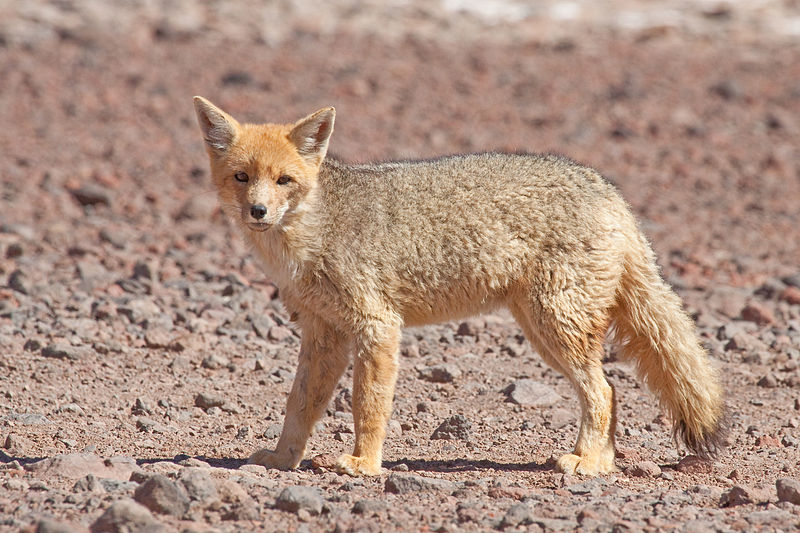
Culpeo Facts
- First of all, the short term Culpeo serves as the common name for the remarkable, yet hard to pronounce, Lycalopex culpaeus. This fascinating type of canid also goes by several other names, however. These other names, including the Andean zorro, the Andean Fox, and the zorro culpeo, all remain easier to pronounce than the scientific term.
- Furthermore, the animal also ranks as the second largest canid on the continent it evolved as native to. It also holds an unusual place in the history of its region. That’s because, in the past, humans bred captive individuals of the species into a domesticated breed. Known as the Fuegian dog, this became extinct around the end of the 19th century.
- Interactions with humans remains rare, but the Culpeo does occasionally feed on sheep. For this reason, some people consider it as a pest. Therefore, humans sometimes hunt or poison individuals. However, overall it remains considered as a beneficial species. Fortunately, its population appears to be stable. For that reason, the IUCN lists it as Least Concern.
Related Articles
Culpeo Physical Description
Most notably, in terms of sheer physical size, the beautiful Culpeo ranks as a rather moderate-sized variety of canid. That holds true due to the fact that its measurements place it roughly in between a red fox and a coyote.
In addition, it also displays a mild degree of sexual dimorphism. In its case, females attain a slight smaller size than males. The larger males average 25 lb (11.4 kg) in weight. The females, however, average about 19 lb (8.4 kg).
In terms of overall length, the species as a whole varies dramatically. But, adults range in total length from 37 – 52 in (95 – 132 cm). In terms of color, it generally presents a rather mottle appearance. Its upper back appears dark, but the shoulders and neck remain a tawny yellow. Its tail has a busy texture, and a black tip.
- Kingdom: Animalia
- Phylum: Chordata
- Class: Mammalia
- Order: Carnivora
- Family: Canidae
- Genus: Lycalopex
- Species: L. culpaeus
Culpeo Distribution, Habitat, and Ecology
Firstly, the fascinating Culpeo inhabits a rather specific region of the continent of South America. Its primary range extends from Peru and Ecuador, to parts of Patagonia and Tierra del Fuego. But, some small scattered populations also occur in the southern regions of Colombia.
Furthermore, the remarkable animal also displays a high degree of adaptability to different habitats. These include regions of deserts and temperate rainforests. However, the majority of its numbers inhabit the western slopes of the Andes. There, it lives in deciduous forests and open areas.
The cunning Culpeo evolved as an opportunistic hunter. Therefore, it feeds on a wide variety of prey. This mainly consists of rabbits, hares, and various rodents. However, it also feeds on carrion when it encounters it. Young guanacos and even domestic livestock serve as prey as well, on occasion. It also eats eggs and plants on occasion.
While it generally lives a solitary life, it forms temporary families during the breeding season. But, researchers still have little precise information concerning its mating habits. Further, depending on where it lives, it maybe either diurnal, nocturnal, or crepuscular. Individuals communicate via a mix of scents, postures, and various sounds.
Species Sharing Its Range
Check out our other articles on 7 Spectacular Herbaceous Plants of the World, Giant Trevally, Mount Erebus, Polar Bear, Bristlecone Pine, Yellow-Eyed Penguin, Creatonotos gangis
